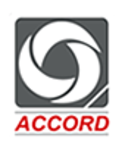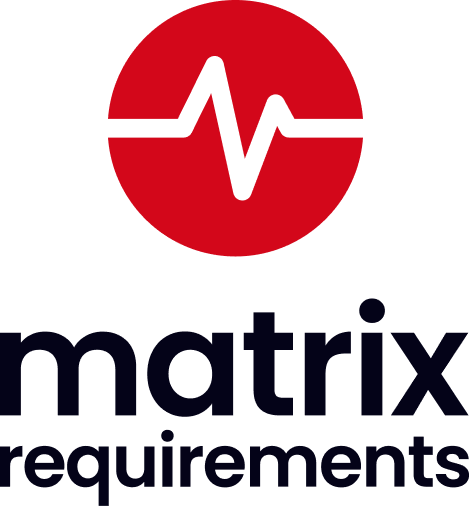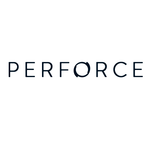What Is Requirements Management Software?
Requirements management software is an essential tool for firms and organizations engaged in software development projects. It aids in monitoring and tracking all requirements, from basic concept to final execution. This software guarantees that the final product meets the requirements and expectations of users, stakeholders, and regulatory agencies. At its core, requirements management software serves as a centralized repository for all project requirements.
This comprises both functional and non-functional requirements, as well as any modifications or updates made during the project's lifecycle. This centralized approach promotes increased visibility and communication among team members and stakeholders, resulting in a more efficient and successful development process. One of the most important characteristics of requirements management software is its ability to trace requirements, which provides a clear audit record of how a need has changed over time.
This is especially important in large and complex projects with several stakeholders since it guarantees that everyone is working toward the same set of criteria and that any changes are appropriately communicated and documented. Furthermore, requirements management software provides powerful version control and change management features.
This ensures that all modifications are adequately documented and approved prior to implementation, lowering the possibility of errors or miscommunication, which can cause delays and additional expenses. In addition to requirement management, this program includes capabilities including prioritizing, collaboration, and reporting. These capabilities enable teams to prioritize activities, communicate on projects in real time, and generate reports to monitor progress and detect potential concerns.
The market offers a variety of requirements management software, each with its own set of features and characteristics. As a buyer, it is critical to carefully evaluate your organization's specific requirements and select software that best matches your requirements management processes.
What Are The Recent Trends In Requirements Management Software?
In recent years, the demand for efficient and effective requirements management software has increased. This is because current projects are becoming increasingly complicated, necessitating improved team collaboration and communication. To make the optimal purchasing decision, a buyer must be up to date on the current developments in requirements management software. So, what are the current trends in requirements management software?
1. Cloud-Based Solutions: One of the most significant changes in requirements management software is the migration to cloud-based solutions. This improves accessibility and cooperation by allowing teams to access and collaborate on requirements from any location with an internet connection. It also eliminates the need for costly infrastructure and technology, making it a more affordable option for organizations.
2. Agile Methodologies: Another developing trend is the use of agile approaches in requirements management software. Agile technique emphasizes adaptability and responsiveness, which are essential in today's fast-paced business climate. Agile features like user story mapping and backlog management allow teams to swiftly prioritize and track requirements.
3. AI & Machine Learning: The use of artificial intelligence (AI) and machine learning (ML) in requirements management software is also becoming more prevalent. These technologies enable to automate time-consuming operations like requirement traceability and effect analysis. They also provide data-driven insights, which can help with decision-making and overall project performance.
4. Visualization Tools: Visualization tools, such as flowcharts and diagrams, have become critical components of requirements management software. These technologies enable teams to better grasp and explain complex requirements, resulting in increased stakeholder participation and alignment.
5. Integration With DevOps: As the desire for faster and more effective software development grows, the combination of requirements management software with DevOps solutions is becoming increasingly prevalent. This enables seamless collaboration between the development and operations teams, resulting in speedier delivery of high-quality products.
Benefits Of Using Requirements Management Software
Requirements management software (RMS) is a sophisticated tool that enables enterprises and organizations to manage the process of developing, documenting, tracking, and validating project requirements. This program provides a single platform for teams to collaboratively manage requirements, saving time and effort while assuring high-quality and timely project delivery. So what are the specific advantages of adopting requirements management software?
Let's have a closer look.
1. Streamlined Requirements Management: Process RMS enables teams to effortlessly capture, organize, and track requirements in a centralized repository. This reduces the possibility of miscommunication, duplication efforts, and errors that occur when utilizing spreadsheets or manual approaches for requirement management. With a well-organized and streamlined process, stakeholders have a clear grasp of project objectives, and teams can efficiently prioritize and meet needs.
2. Improved Communication And Collaboration: One of the primary advantages of RMS is enhanced communication and collaboration among project stakeholders. This program offers a collaborative platform for all team members, allowing them to discuss, comment on, and review requirements in real time. With all required information in one location, teams can collaborate smoothly, reducing delays and misconceptions.
3. Enhanced Visibility And Transparency: needs management software gives real-time visibility into project progress, allowing stakeholders to monitor the status of needs throughout the project. This improved transparency allows teams to make more informed decisions, recognize possible problems, and respond quickly. As a result, initiatives can stay on track, improving the likelihood of a successful completion.
4. Traceability And Impact Analysis: RMS provides traceability features, allowing users to track changes and understand how requirements interact throughout the project lifetime. This feature enables teams to assess the impact of modifications on other requirements, ensuring that projects remain in line with business objectives. Traceability also improves compliance and audit processes, making it easier to demonstrate regulatory compliance.
5. Time And Cost Savings: Implementing requirements management software can lead to considerable time and cost savings. Projects can be performed more efficiently by streamlining the process, improving collaboration, and increasing visibility. This saves time and resources. Automated features like requirement reuse, impact analysis, and traceability boost efficiency while lowering rework and project costs.
Overall, requirements management software provides various advantages to any business or organization seeking to streamline their project delivery process. RMS can considerably improve project outcomes, including greater communication and cooperation, traceability, and cost savings. Businesses that use the proper requirements management software can boost productivity, decrease risks, and complete high-quality projects on schedule.
Important Factors To Consider While Purchasing Requirements Management Software?
When it comes to selecting requirements management software, there are various variables to consider to ensure that you are making the best choice for your company. These considerations include the software's features, functionality, ease of use, compatibility, and price.
Let's take a closer look at each of these key elements.
1. Features: The first thing to consider is whether the software has all of the functionality you need to manage your requirements. This could incorporate features like requirement tracking, version control, communication tools, and reporting. Make a list of the essential features that are vital to your firm and ensure that the software you are considering includes them.
2. Functionality: Along with features, it is critical to assess the software's functionality. How user-friendly is the interface? Are there any workflow customization options? Can the program be seamlessly connected with other tools and systems? Look for software that not only provides the capabilities you require, but also runs easily and efficiently.
3. Usability: Your team will use this software on a daily basis, thus it must be simple to understand and utilize. Consider the software's user interface and navigational structure. Is it intuitive and easy to use? Can it be simply implemented by your staff without additional training? Look for products that will streamline rather than complicate your requirements management operations.
4. Compatibility: Make sure the software you chose is compatible with your current systems and tools. This includes compatibility with your operating system, browsers, and any other software that your team utilizes for work. It's also vital to assess whether the software can adapt to your organization's specific processes and workflows.
5. Cost: Finally, you must examine the cost of the software. While it may be tempting to choose the lowest solution, keep in mind that this software will play a critical role in your organization's requirements management process. Look for a price that is reasonable in relation to the features and capabilities. Consider the software's long-term value and how it will help your firm in the future.
Overall, selecting the appropriate requirements management software necessitates careful assessment of the product's features, functionality, usability, compatibility, and pricing. Take the time to investigate and evaluate various possibilities to determine which software best meets your organization's needs and budget. This will allow you to make an informed judgment and eventually select software that will effectively streamline your requirements management process.
What Are The Key Features To Look For In Requirements Management Software?
When it comes to handling project or product requirements, the correct software is critical to success. Requirements management software not only tracks and organizes requirements, but also guarantees they are met and followed throughout the development process. However, with so many options on the market, it can be difficult for customers to select the correct one.
To make the decision easier, below are the main aspects to look for in requirements management software:
1. Configurable Requirement Templates: Look for software that provides configurable templates for a wide range of needs, including functional, non-functional, and user requirements. This tool minimizes the time and effort required to generate requirements while also ensuring uniformity across projects.
2. Traceability: Traceability is critical in requirements management because it allows you to monitor the relationship between each need and its source, as well as any modifications made to them. This feature aids in the identification of potential hazards and their implications for other needs, resulting in a thorough grasp of the project scope.
3. Collaboration And Communication: Effective requirements management software should make it easier for team members and stakeholders to collaborate and communicate. Look for tools like commenting, tagging, and notifications that enable real-time debates and updates on needs.
4. Version Control: In a fast-paced project setting, requirements often change. Version control in requirements management software enables users to track changes and go back to prior versions as needed. This guarantees that all team members are working with the most current and approved requirements.
5. Reporting And Analysis: Reporting and analysis tools give information about the progress and status of requirements, enabling project managers to make educated decisions. Look for software that provides configurable reports as well as visual data representations such as charts and graphs to aid comprehension.
6. Integration With Other Tools: Requirements management software should be compatible with other project tools, such as project management or testing software. This integration improves the development process and guarantees that all project components are in sync.
7. Security And Access Control: Because requirements are the foundation of any project, it is critical to protect them from unauthorized access. Look for software that includes access control capabilities, such as role-based permissions, to guarantee that only authorized individuals may access critical information.
8. Scalability: As projects develop in complexity and breadth, scalability in requirements management software becomes increasingly crucial. Look for software that can handle a big number of requirements and users, as well as add new features and functionalities as the project grows.
Why Do Businesses Need Requirements Management Software?
Requirements management software is an essential tool for companies of all sizes, regardless of industry. It provides an efficient and systematic method for documenting, tracking, and managing all project, product, or service requirements. In today's fast-paced corporate climate, where time and resources are limited, the use of requirements management software can have a substantial impact on project success.
One of the key motivations for firms to use requirements management software is to ensure that all project requirements are precisely and completely documented. Teams sometimes struggle to define and prioritize needs early in a project, resulting in scope creep and missed deadlines. Businesses can use requirements management software to easily capture and track all needs, avoiding confusion or miscommunication among team members.
Furthermore, requirements management software enables firms to keep requirements consistent across all project phases. As a project progresses, new requirements may emerge, while current ones may change. Without a centralized system, this can lead to confusion and delays. However, a requirements management tool serves as a common repository for all project needs, making it easier to manage modifications and ensuring that all team members are working with the most recent versions.
Requirements management software also helps project stakeholders collaborate and communicate effectively. It enables team members, clients, and other stakeholders to examine and review requirements, provide feedback, and negotiate modifications in real time. This streamlines the review and approval process, saving time and reducing the possibility of errors or miscommunication.
Furthermore, requirements management software can help firms stay within budget and meet deadlines by allowing for efficient need prioritizing and resource allocation. Businesses can improve project success rates by prioritizing requirements based on their relevance and urgency. This ensures that the most crucial features are provided on time and resources are allocated efficiently.
How Much Time Is Required To Implement Requirements Management Software?
The time required to establish requirements management software varies according to your organization's specific demands and complexity. However, it can take anything from a few weeks and several months.
When assessing the implementation timetable, it is crucial to consider the following steps:
1. Grasp Your Organization's Requirements Process: Prior to installing any software, you must have a thorough grasp of your organization's current requirements management process. This can help you discover areas for improvement and verify that the program meets your specific requirements.
2. Researching And Selecting The Correct Software: This process might take several weeks to a month because it entails assessing many possibilities, comparing features and prices, and eventually deciding on the best fit for your firm.
3. Planning And Preparation: Once you've decided on the software, you'll need to plan and prepare for its implementation. This includes organizing data, training people, and establishing workflows. Depending on the size and complexity of your organisation, this could take anything from a few days to a few weeks.
4. Actual Implementation: This is the step at which the software is deployed, configured, and customized to your organization's specifications. The duration of this operation varies greatly depending on the intricacy of the software and the amount of data to be transferred.
5. User Adoption And Training: Proper training and onboarding are essential for a successful software implementation. This can take anything from a few days to a few weeks, depending on how many users there are and how experienced they are with the software.
Overall, keep in mind that deploying requirements management software is a continuous process. To remain effective, it must be maintained, updated, and supported by users on a continuous basis. As a result, it is critical to provide sufficient time and resources early to ensure a seamless and successful implementation.
What Is The Level Of Customization Available In Requirements Management Software?
When it comes to requirements management software, potential customers must consider customisation. The level of customisation available in a tool has a significant impact on its usability and usefulness for your team.
Here's a closer look at the various customization possibilities included in requirements management software.
1. User Interface Modification: One type of modification to look for is the flexibility to modify the user interface to your individual requirements. This contains capabilities like the option to rearrange or hide specific sections, switch between color schemes, and change font size. A configurable user interface can improve the user experience and make the product more accessible to your staff.
2. Custom Fields: Another important area of customization is the ability to create custom fields. This feature allows you to include fields that are customized to your project and its requirements. It can also help you track information that is not included in the software's pre-defined fields. The option to add custom fields allows you more control over how you collect and maintain requirements.
3. Workflow Customization: Each team may create their own procedures for managing needs. A strong requirements management software should allow you to tailor the process to meet the demands of your team. This can include the ability to design many stages, assign specific actions to each stage, and configure notifications and alarms. Customizable workflows can help to simplify the requirements management process and guarantee that all team members are on the same page.
4. Integration: The quantity of integration possibilities also influences the amount of customization accessible in requirements management software. The more integrations a tool has, the more options you have for connecting with other tools and systems that your team may already be utilizing. This may involve integrations with project management tools, bug tracking software, and other relevant apps.
5. Reporting And Dashboard Customization: Finally, being able to modify reports and dashboards can provide your team with valuable insights and visualizations. Look for a platform that allows you to customize the metrics you include in your reports, as well as schedule and automate them. The same is true for dashboards, which should allow you to tailor the layout, widgets, and data visualizations to your team's specific needs.
Which Industries Can Benefit The Most From Requirements Management Software?
Requirements Management Software is an essential tool for enterprises and organizations that rely on complicated project planning and execution. With the growing demand for efficiency and accuracy, businesses across industries are turning to Requirements Management Software to streamline processes and improve overall performance. But which sectors will profit most from this software? Let us find out.
1. Software Development Industry: As expected, the software development sector is the leading consumer of Requirements Management Software. All of a project's functional and non-functional needs can be captured, organized, tracked, and prioritized using the program. This industry can substantially benefit from such a technology because it assures that the final product satisfies the client's expectations and criteria while staying on schedule and under budget.
2. Healthcare Industry: Healthcare is another business that can greatly benefit from Requirements Management Software. With the ongoing development of new medical devices and technologies, effective requirements management methods are becoming increasingly important. This software can assist healthcare businesses in capturing and managing equipment, system, and process needs, hence assuring regulatory compliance and improved patient outcomes.
3. Manufacturing Industry: In the highly competitive manufacturing industry, having a strong and efficient procedure for managing needs is critical. Manufacturers can use Requirements Management Software to design, track, and manage product specs, ensuring that all stakeholders are on the same page from beginning to end. It also removes the possibility of costly errors and delays, leading to higher product quality and customer satisfaction.
4. Government And Defense: Requirements Management Software is widely used in the government and defense industries. With such complicated and high-stakes projects, accurate and traceable requirements management is critical. This program helps to manage complicated and severe standards, ensure compliance, and reduce risks. It also aids in the construction of dependable and secure systems while reducing the time and effort necessary for compliance audits.
5. Banking And Financial Services Industry: In the highly regulated banking and financial services industry, ensuring compliance is critical. These firms use standards Management Software to guarantee that their software systems and procedures meet regulatory standards while also aligning with the company's business goals. This program facilitates excellent communication across several teams, resulting in faster project delivery and better risk management.
Conclusion
To summarize, selecting the correct requirements management software is critical for any organization seeking to efficiently manage projects and achieve success. With so many options available on the market, it is critical to properly assess each solution and consider your individual requirements before making a decision. First, analyze the software's essential features and functionality, such as requirement traceability, collaboration tools, and integration possibilities.
This ensures that the software is compatible with your project management practices and enables good communication and collaboration among team members. Second, consider the scalability and adaptability of the software. As your organization grows and projects get more complicated, the software should be able to adapt and handle growing requirements while maintaining performance.
Also, examine the level of customisation provided by the software. This allows you to adjust the software to your individual business demands and processes, making it a worthwhile long-term investment. Furthermore, examine the software's user interface and ease of use. A user-friendly interface and simple navigation will allow team members to quickly adapt to and utilize the program efficiently, enhancing productivity and reducing the learning curve.
Finally, carefully analyze the software vendor's pricing and support services. A detailed overview of the charges and assistance options will ensure that you make an informed selection and avoid future surprise fees. By considering all of these criteria, you can make an informed selection and choose the requirements management software that best meets your organization's needs and goals.
Always conduct thorough study and demo the software before making a final selection. With the appropriate requirements management software, you can streamline your project management procedures and achieve organizational success.






















